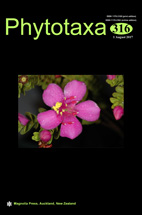Abstract
The geographic distribution of 10 genera and 71 species of the order Gomphales in Mexico is analysed using the panbiogeographic approach. This allows us to gain a better understanding of distribution patterns and to propose conservation areas. We compiled a database containing 3,484 occurrence records for Gomphales from taxonomic literature, herbarium specimens, institutional databases and field collections. Using this database, we obtained individual tracks for species of Gomphales. From the comparison and intersection of the 43 individual tracks, we identified six generalised tracks and 10 panbiogeographic nodes. Most of the generalised tracks were associated with the main Mexican mountains systems. Accordingly, panbiogeographic nodes were mainly located along the Trans-Mexican Volcanic Belt. Most nodes coincided with previously recognised nodes in other taxa, and almost half were located within Natural Protected Areas. Based on our results, we suggest that future molecular studies are necessary in order to define with precision species limits, which together with regional species inventories in tropical areas will significantly improve our understanding of fungal distributions. An integrative discussion regarding conservation criteria, and how to integrate endemic species on conservation programs is also included.

